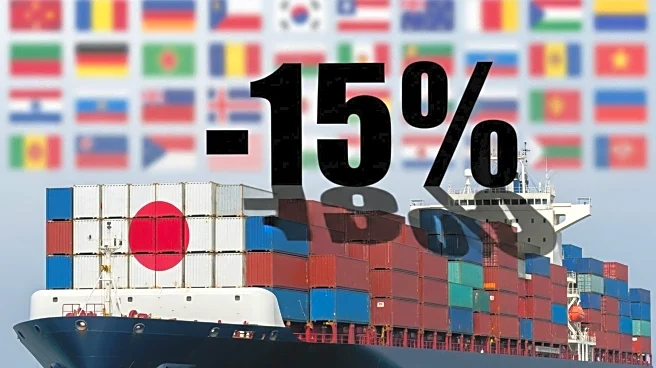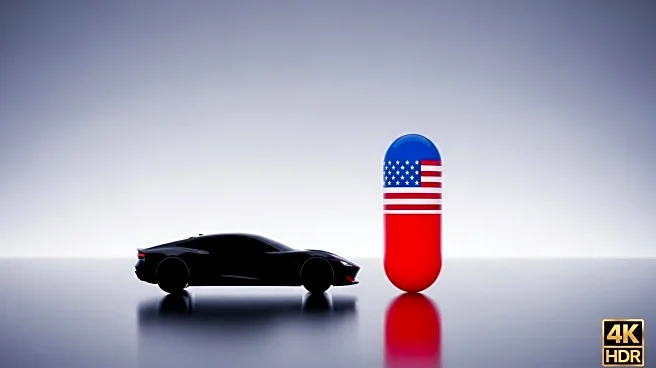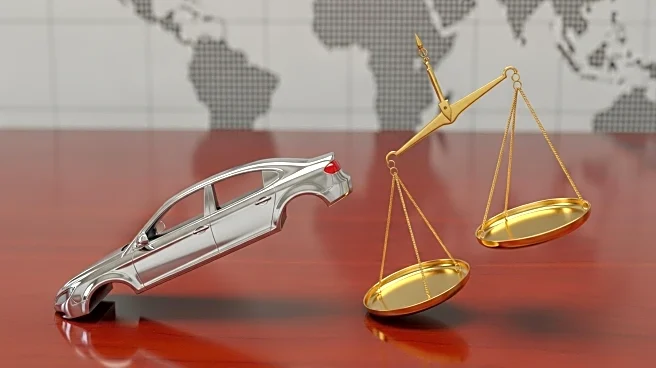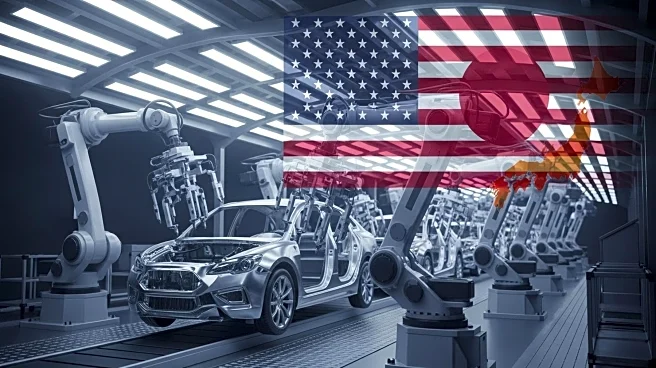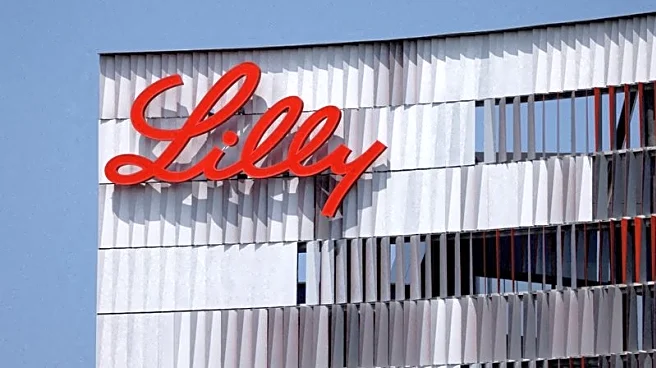What's Happening?
The U.S.-Japan trade deal finalized in late August 2025 reduces tariffs on Japanese auto imports from 27.5% to 15%, marking a significant shift in trans-Pacific economic dynamics. This recalibration, retroactive to August 7, 2025, has immediate implications for Japanese automakers, pharmaceutical firms, and U.S. investors. The deal offers short-term relief for Japan's export-dependent industries but introduces new strategic considerations for long-term investment. Japanese automakers like Toyota and Honda have seen stock prices surge following the announcement, reflecting investor optimism about improved profit margins and reduced uncertainty.
Why It's Important?
The reduction of U.S. auto tariffs to 15% provides Japanese automakers with a critical reprieve, enhancing profit margins and reducing uncertainty. Japan's commitment to invest $550 billion in U.S. projects introduces a dual-edged dynamic, potentially stabilizing supply chains but raising questions about the sustainability of such commitments. The pharmaceutical sector gains U.S. tariff exemptions for generics, enhancing competitiveness but facing intensified competition from EU firms. The deal underscores the importance of geopolitical agility in today's investment landscape, with potential risks of policy reversals or retaliatory measures.
What's Next?
The trade agreement creates opportunities for Japanese firms to optimize production and export strategies, while reliance on U.S. policy stability necessitates a cautious approach. The pharmaceutical sector faces heightened competition and regulatory uncertainty, with potential limitations on long-term upside for Japanese exporters. Investors may prioritize firms with diversified portfolios or those leveraging the U.S. market for global expansion. The deal reflects broader trends of trade policy being weaponized to achieve domestic economic goals, with diversification and scenario planning essential for navigating this complex environment.
